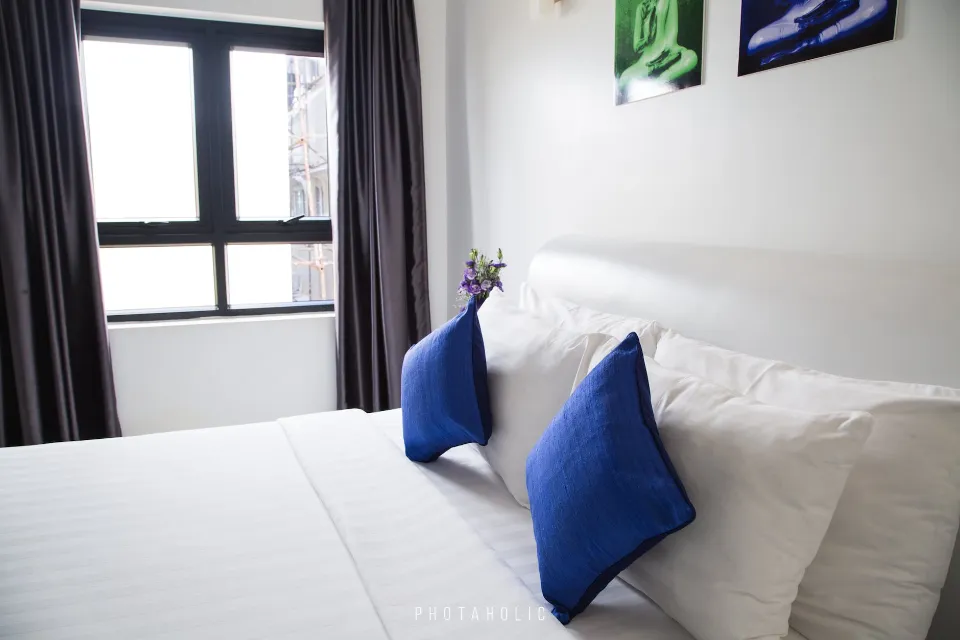Tumble drying is machine drying as opposed to line drying or spreading out to dry. And its laundry settings can be challenging, we comprehend.
You might be struggling to figure out how to wash the mountains of laundry piling up in your room, or you might be figuring out which setting to use on the new dryer in your new apartment.
Whatever circumstance you are in as you read this, you have come to the right place for a simple and brief explanation of the tumble dry setting.
Table of Contents
What is Tumble Dry?
Simply put, tumble drying is machine drying as opposed to line drying or spreading out to dry. This method is called “Tumble Dry” because clothes tumble in the dryer drum where airflow, along with heat, dries clothes quickly. However, not all fabrics are intended to be tumble dried; always check the care tag before using.
You have a lot of options for timing, cycles, and heat when using the tumble dry method. Continue reading to find out more about when it’s appropriate to tumble dry different types of fabrics as well as when you shouldn’t.
How to Tumble Drying?
Knowing whether or not to tumble dry something (or even at what temperature) is insufficient. For the best outcomes, heed these recommendations.
- So that lightweight or quickly drying items don’t overdry, keep like garments together. Don’t, for instance, combine towels and clothing with a permanent press in the same load. Drying delicates and undergarments separately are recommended.
- After being washed, clothing should be damp but not dripping. If they are drenched, let them run through another spin cycle in the washer to remove extra moisture.
- Don’t fill up your dryer to the brim. Slower drying times and wrinkled clothes are the results of tightly balled clothes or an overfilled drum. These issues can also affect the balance of the dryer, which can result in noises or squeaking.
- Stick to the dryer sheet instructions and don’t use more than what’s recommended because doing so could cause a waxy buildup on the lint screen. To keep good air circulation for quick drying times, clean the screen after each load.
What Does Tumble Dry Medium Mean?
When you see “tumble dry medium” on the drying instructions, it means to machine dry the item on medium heat, which is usually around 135 degrees For permanent press or fabric that is prone to wrinkles, such as business attire made of synthetic fibers like nylon and polyester, medium heat is recommended in degrees Fahrenheit. Moderate heat can also be used to prevent shrinkage in light, thin cotton garments like t-shirts. In contrast to high heat, medium heat dries fabrics more slowly and gently, delaying the formation of wrinkles while safeguarding synthetic fibers from high heat’s ripple-prone effects.
Pick a Medium Heat for Clothes Like These:
- Button-up work shirts
- Trousers or slacks
- Light cotton items like t-shirts
What Does Tumble Dry No Heat Mean?
“Tumble dry no heat” means to dry in the dryer with zero heat. This setting may also be labeled “air only” on your dryer. Although it’s intended for extremely delicate items that cannot withstand any heat, it’s most frequently used to freshen, fluff, or remove hair and other debris from dry items in between washes. Be aware that tumble drying without heat will require some time, though it won’t take as long as line drying because the air movement in the dryer tends to expedite the process.
Pick a No Heat Setting in These Scenarios:
- Drying very delicate items that are not wrinkle-prone
- Fluffing pillows and blankets
- Fluffing winter coats
- Refreshing clothes that have hair, dust, or other debris stuck to them
What Does Tumble Dry Low Mean?
“Tumble dry low” means to dry your item in the dryer on a low heat setting. Low heat is intended for delicate items like knitwear or sheer fabrics, as well as workout attire made of high-performance fabric like spandex and lycra. Low heat is typically around 125 degrees Fahrenheit. Low heat aids in preventing fading, fraying, stretching, warping, and other heat-related problems for heat-sensitive fabrics.
Pick a Low Heat Setting for Clothes Like These:
- Knit sweaters
- Clothing with sheer fabric
- Embellished fabrics
- Lingerie
- Workout clothes
- Winter coats and jacket shells
What Are the Most Common Tumble Dry Settings?
The term “tumble dry setting” refers to any option available on a dryer. Most dryers let you choose a cycle with predetermined settings, such as Normal, Delicate, Heavy Duty, or Quick Dry, as well as a time, heat level, and dryness level. When you see “tumble dry low” in drying instructions, the “low” refers to heat. See the information on tumble dry heat settings below.
Whether you’re looking for commercial laundry solutions, dry cleaning, or washing and folding services, we think our expert services will simplify your life. We hope this article will help you.
FAQ About Tumble Dry
Can I Tumble Dry Any Type of Clothing?
No, some fabrics can’t stand up to the heat or motion of a dryer. These items can dry by being hung or by being placed flat. Anything made of wool, cashmere, silk, lace, leather, or suede is a good example of clothing that shouldn’t typically be dried in the dryer. Of course, anything labeled “dry clean only” should be taken to a professional cleaner.
What Can I Use Instead of Tumble Dry?
Without a tumble dryer, you can still dry your wet laundry, though it might take longer. You can use an additional spin cycle in your washer to wring out extra water and then hang your laundry on a line or drying rack to let it air dry to dry your clothes without using a conventional dryer.
Does Tumble Dry Mean Air Dry?
“Tumble dry” indicates that the item of clothing can be dried using a dryer rather than hanging it up or laying flat to dry. You can use the dryer’s recommended heat setting to dry items with laundry labels indicating that tumble drying is safe.
What Temperature Should I Tumble Dry At?
The type of fabric you want to dry will determine what temperature you should use to tumble dry your clothes. To choose the best drying temperatures for your items, always refer to the care label on your clothing.
Can I Tumble Dry Clothes Labeled “do Not Tumble Dry” in a No Heat Setting?
No, even with no heat, you shouldn’t tumble dry an item if the label specifically advises against it. Wrinkles that are difficult to remove without heat may be produced by the tumbling motion. Shrinkage after washing could also result from tumble drying without heat. Adding fabric softener to the next load of laundry may help if your clothes are still stiff after air drying. On a windy day, line drying will also enable the fabric to move while drying without being harmed, thereby reducing stiffness.
Do Tumble Dry Shrink Clothes?
Your clothes run the risk of shrinking if you don’t wash and dry them according to the instructions on the care label. The care label will specify the appropriate washer and dryer temperatures to choose when doing laundry for your family because some fabrics can shrink during high-heat drying cycles.
Whether you’re looking for commercial laundry solutions, dry cleaning, or washing and folding services, we think our expert services will simplify your life. Additionally, get $20 off your first order for a limited time!





